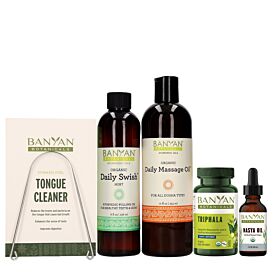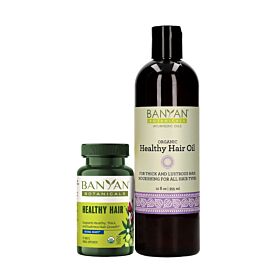A New Way to Do New Year’s Resolutions
Growing up, our kitchen had what we called “a junk drawer.” This drawer was crammed full of pens, markers, various rolls of tape, and different tubes of glue. It could produce rubber bands, paper clips, origami paper and sticky notes, telephone wire, macramé cord, string and twine, various sizes of nails, screws, and thumbtacks, along with coins from the US and overseas. The junk drawer was a make-something drawer. It was also a fix-it drawer. It held the only tools my family owned or used: a hammer, a screwdriver, and a pair of pliers.
My mother, sisters, and I were all very skilled with DIY and fix it up. We could accomplish a lot with a hammer, a screwdriver, and a pair of pliers. Amazing, unexpected, and satisfying accomplishments. When something needed fixing, we dug into the junk drawer for a hammer, a screwdriver, or pliers. And we made do. If something couldn’t be fixed with these tools, then it couldn’t or wouldn’t be fixed. At least not by any of us. And depending on the importance of the broken thing, it would be overlooked and discarded or deemed worthy of outside assistance. In that case, Mom would call the handy man. He had a whole truck full of tools. Hundreds of tools. And he could accurately assess a problem and fix it easily; he was skillful and adept with hundreds of problems, hundreds of solutions, and hundreds of tools.
When we are upset or disturbed, when we lack peace of mind, when we ache or long for more comfort, or love, or food or free time, we search for solutions and support for these concerns. In my yoga classroom and wellness coaching, in the media and in our national dialogue on health, I hear the same two solutions for hundreds of problems: lose weight and work out more. For thousands of diverse concerns and problems, across cultures, generations, societies, and economies, millions of people reach for the same two tools—lose weight and exercise more. When we look around, and when we read the statistics, despite more and more people being told this by health professionals, and people taking up this mantra for health and happiness, what we see and read is that the population continues to gain weight and exercise less.
Obviously nutritional health, ease of movement, and vitality are a necessity. And yet it’s clear that in reaching for the Lose Weight tool and the Exercise More tool, we are reaching for the wrong tools. The problem is not fixed. In fact, the problem is getting worse!
The new year beckons the new, along with renewal, dreams, transformation, and the accompanying resolutions for the changes we seek.
Honor each goal—the small ones (sleep in late once a week, schedule time for lunch or phone calls with close friends, dance more) and the gigantic ones (start an IRA, begin a new job search, or go back to school).
When you try to accomplish any of the above concerns with a hammer or a screwdriver, or a starve-or-exhaust yourself, you may well suffer the ache and hardship of physical denial along with unmet goals. In other words, failure.
In coaching, we understand the most important experience for success is success. When a client sets a goal that is impractical or unsustainable, they will fail. That sinking feeling of failure is enough of an obstacle to quit altogether. A coach helps a client choose to support goals that are SMART: specific, measurable, attainable, realistic, and timely. We employ these tools to create the action plan and the steps to succeed.
I can’t tell you how many times (really, I can’t because it’s that many) a client will say “I want to cook and bring my lunch to work every day.” Ok, I’ll say, let’s look at your calendar, and we can schedule the time to shop, prepare, and eat your lunches. And looking at their calendar, the client sees they are fully overscheduled and have no time to shop, and already have three meetings scheduled during lunch hour for the coming week. And in that moment the client feels utter failure and overwhelmed that she will never ever be able to get her health on track. She is ready to drop the whole plan. It’s as if she’s throwing the screwdriver back into the junk drawer, and tossing the broken dream into the trash.

The client is not inclined to adjust, adapt, or accommodate and create a path for success. How would it feel to bring lunch on two days? What would that look like? What would you need to do to make that happen? How likely are you to get that done? Together we work the plan until it is one the client feels she can comfortably achieve. A week later, having accomplished the goal, her feeling about being able to do new things and to look after herself is so high that she continues to partner on goals, steps, and solutions in many areas of her life.
Sankalpa is both a practice and a Sanskrit term taken from yoga philosophy and ancient traditions. Sankalpa means an auspicious imagining or a positive visualization. Before any undertaking—a wedding, a new school year, a business opening, a yoga class—one makes a sankalpa, imagining the desired outcome and how it benefits all who are included. A sankalpa is a useful practice for crafting a New Year’s resolution because we look at the big picture of our entire coming year: how we’d like to spend each day, how we can shift from where we are now, and how we begin living that vision. We create a mission and an intention that is filled with peace and joy, that sketches out not only a few desires (be thinner, wake up earlier for yoga, sit in meditation every day no matter what) but extends over our whole self and our whole life. We see the life we want to live and step into it with our community, family, and workplace supporting us.
Take two weeks or more to craft a sankalpa that is vast and deep and nourishes your entire being. Write it out or draw it. Take notes daily and keep making it more joyous, uplifting, and real. When you feel the sankalpa is complete, or nearly so, write down the supportive and uplifting sustainable changes you’d like to see and step towards those. Let this vision guide you daily and begin your day by visualizing it, or reflecting on a vision board you have created for this, or reviewing a written description of this joy-filled vision. And from there create daily steps that are fun and meaningful commitments that lead to the outcomes you seek. This is a fully personal path and plan. It is not borrowed from someone else or based on popular assumptions of how we “should be” living. Every choice you make, every time you are faced with a decision or a dilemma, ask yourself “does this support my sankalpa, does this serve my joyous vision?” And then it is your choice to say yes or no accordingly, to truly participate in living your vision.
As you look to your New Year's resolutions and this new year, understand it is not one day of change but 365 days, each one a continuing opportunity to practice, support, and create your amazing joy-filled vision and life. Expand and discover new tools, new supports, and new opportunities for the vast and abundant aspects of your well-rounded and meaningful life, of the simultaneously complex and uncomplicated, fundamental, and poetic you.












